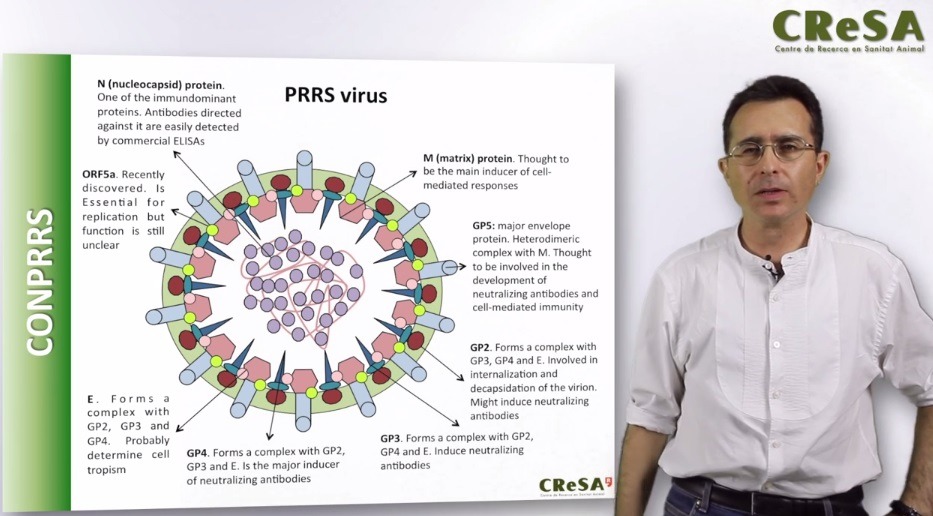Presentation
Porcine reproductive and respiratory syndrome (PRRS) is one of the common diseases in swine that is most costly for producers. The cost PRRS derives from direct losses (dead piglets or aborted sows) but also from indirect losses attributable to the increase in medication costs, feeding costs, etc. Control of PRRS is a difficult question requiring a good knowledge of the epidemiology of the infection, of the basic knowledge on biosecurity that allow to maintain a herd free of the virus as well as of the diagnostic methods and protocols with their advantages and limitations. Solid knowledge on the features of control methods including vaccination is required. In any case, disease control needs to be multifactorial and should adapt to the particular circumstances of every herd.
In the present course we aim to provide the students with the basic knowledge for establishing a PRRS control program in the farm.
This course will take place in campus CReSA (Centre de Recerca en Sanitat Animal)
Teaching staff
Dr. Enric Mateu, Professor at the Departament de Sanitat i Anatomia Animals. Veterinary Faculty (Universitat Autònoma de Barcelona) –CReSA researcher, Head of the endemic viral diseases subprogram and Director of the Infectious Diseases Diagnostic Laboratory of the UAB (LVDMI). His research is focused on swine infectious diseases being author of several paper on this subject in international journals. Dr. Mateu participates in the European projects PoRRSCon: New tools and approaches to control Porcine Reproductive and Respiratory Syndrome in the EU and Asia and in the European network EEUROPRRSNet.



